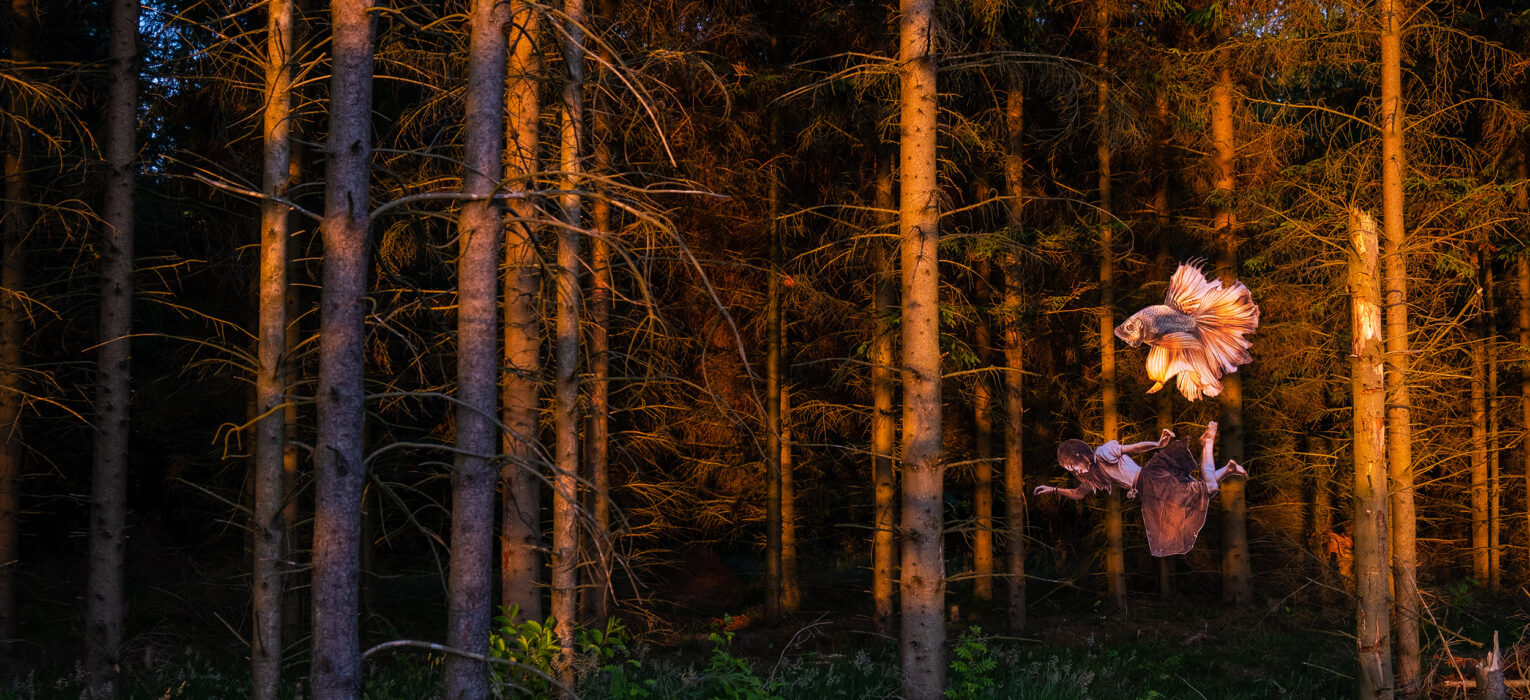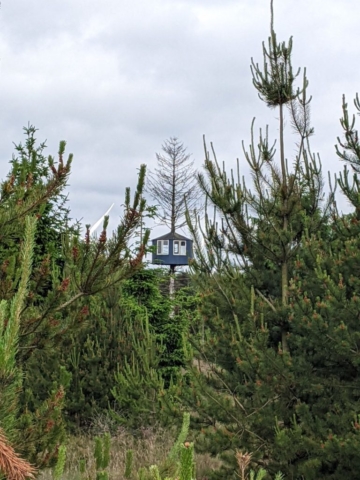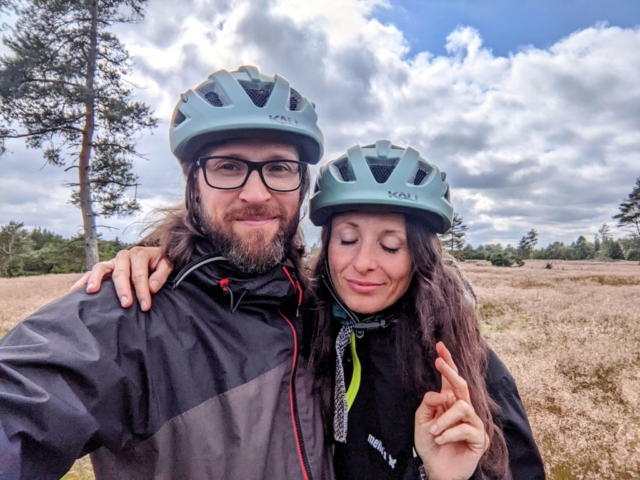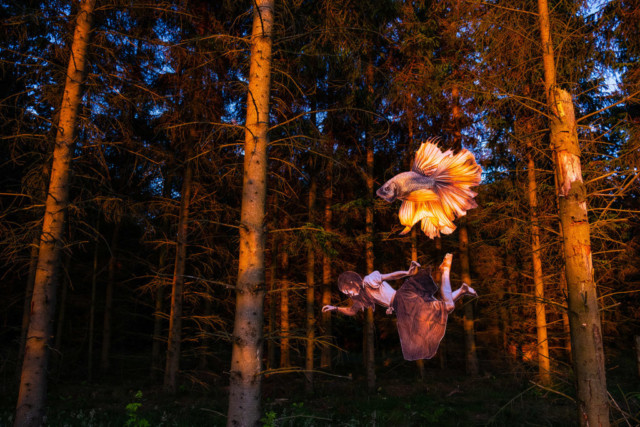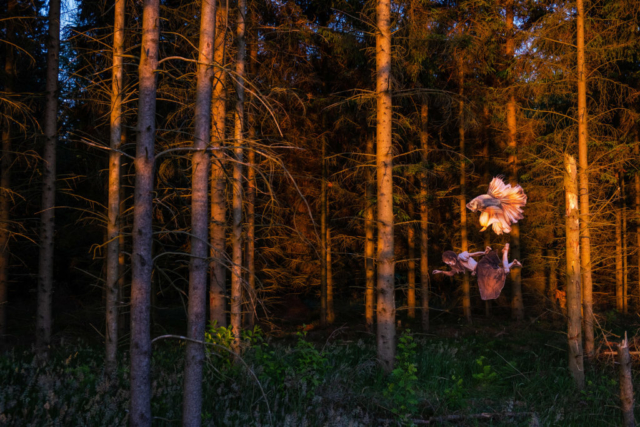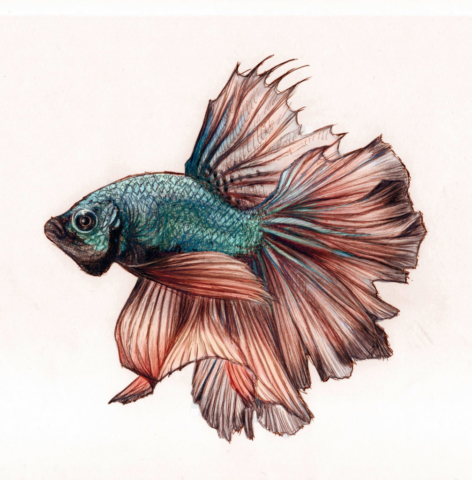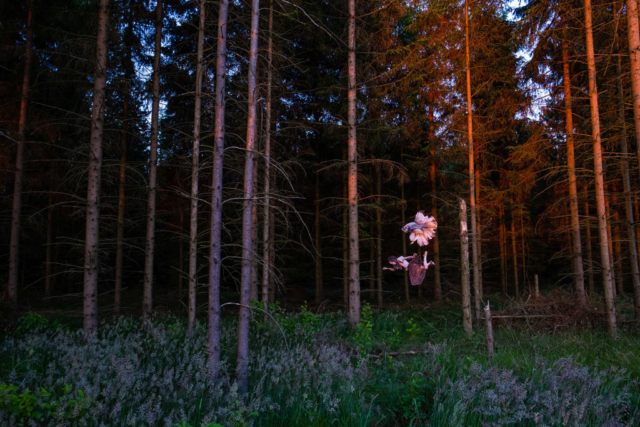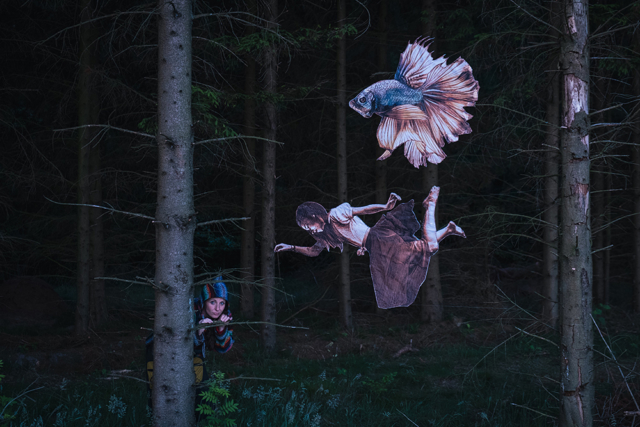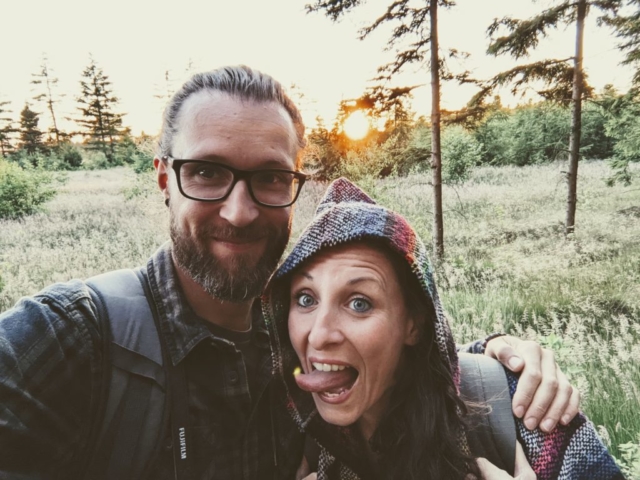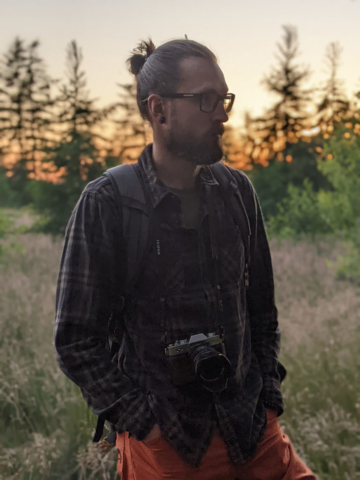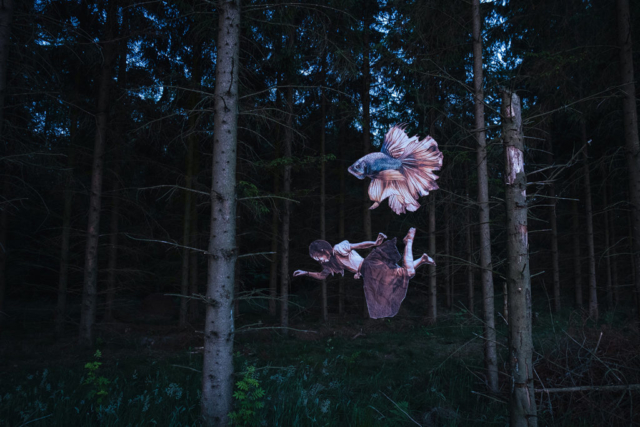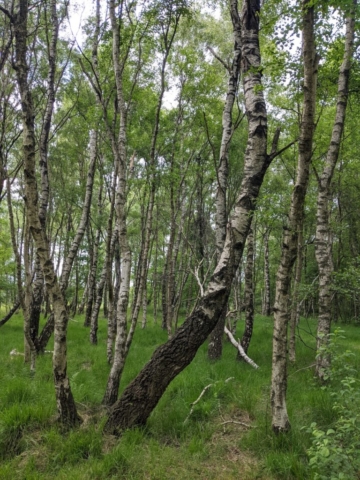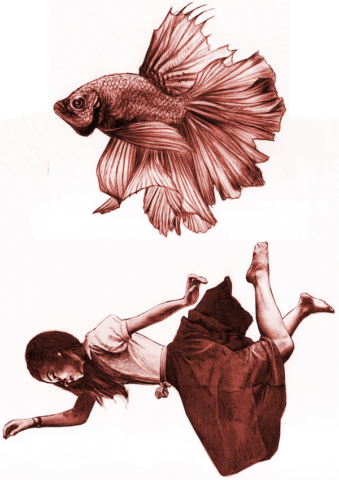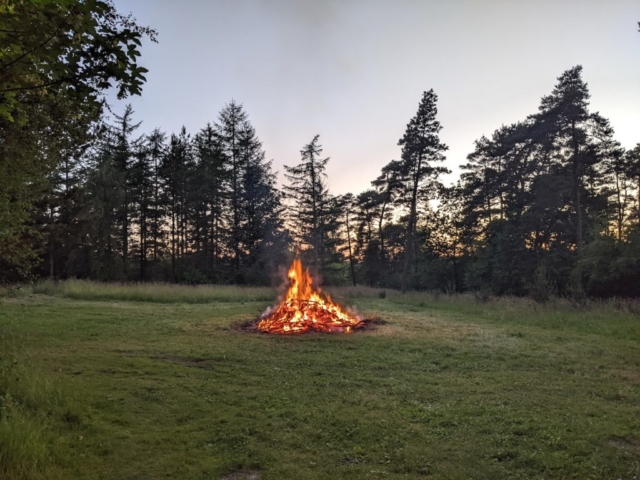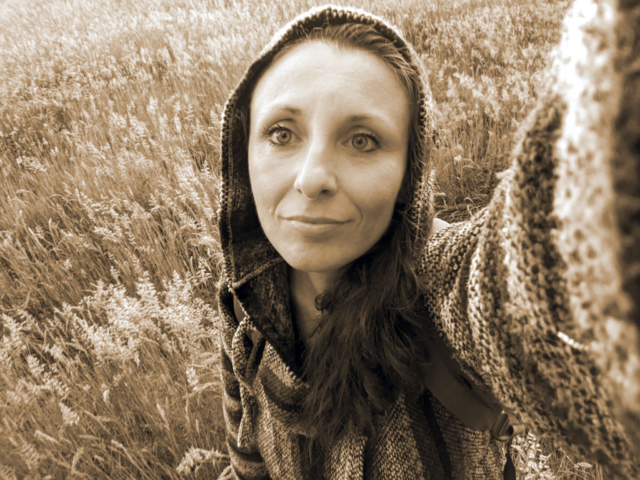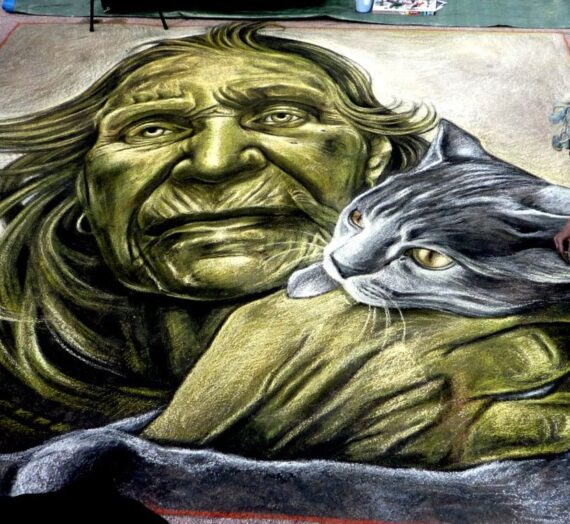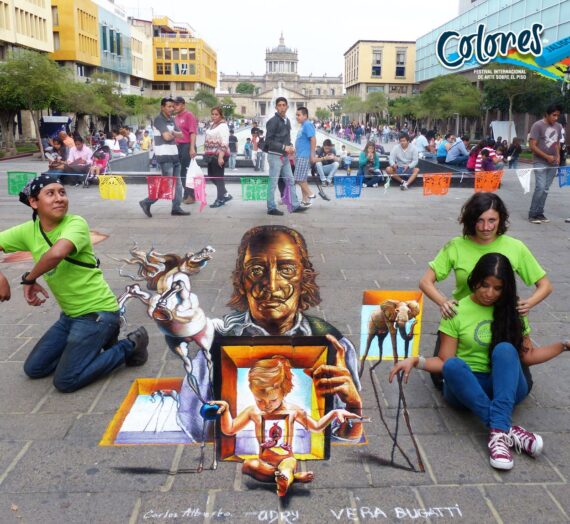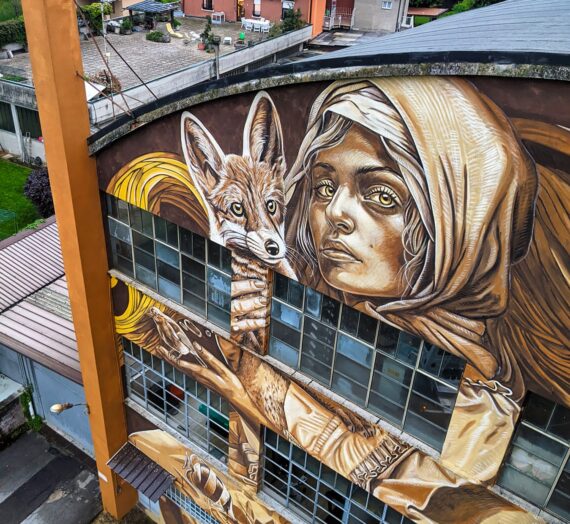Questa installazione è stata e resta un’incognita anche per me.
Volevo creare un sistema che dialogasse con la natura misteriosa e forte del bosco danese (nell’area dello Jutland) e mi ero fatta un’idea di epifania monocroma che nascesse dal quel silenzio di sussurri. Un’opera effimera inoltre, contraltare di tutto ciò che operosamente conserviamo.
Una figura umana, per quanto eterea, e un pesce, simbolo di ciò che là non può stare per sua stessa fisiologia. Due elementi dipendenti uno dall’altro e ancorati fra loro come ad un cielo trasparente e suscettibile.
Le suggestioni erano molte, le riporto per completezza ma è come se avessi pescato soltanto emotivamente all’interno di un calderone che ha voluto fondere concetti diversi e complessi: dall’aeon–onis (αἰών -ῶνος), che per i Greci rappresentava il tempo assoluto, adorato come una divinità nelle grandi religioni misteriche dell’età ellenistico-romana, fino agli Eoni della dottrina gnostica e neoplatonica, ossia ciascuno dei numerosi esseri spirituali procedenti per emanazione dal principio supremo, gerarchicamente disposti e concepiti come intermediari tra il mondo della luce e quello della tenebra.
Lo stesso termine si incontra nell’escatologia neotestamentaria, per esempio nel Vangelo di Giovanni l’aiòn è un periodo di tempo, un ciclo di circa 2.160 anni che ha un inizio e una fine.
L’avevo trovato anche leggendo Ireneo (Contro le eresie) dove diceva che lo spirito santo, dopo aver reso uguali tutti gli eoni, insegnò loro a rendere grazie e introdusse il vero riposo, rendendoli simili per forma e pensiero. Era presente anche nel sistema di Valentino, il quale riferiva ad una totalità di trenta esistenze soprasensibili, emanazioni del Dio supremo, gerarchicamente disposte per syzygie, specie di coniugazioni a coppia.
Platone usava il termine Aion per denotare l’Eternità del Mondo delle Idee, nel suo mito della caverna e oggi in geologia l’eone indica l’unità di misura dei tempi geologici, corrispondente a un miliardo di anni.
Un concetto quindi che nella mia testa coniugava un’idea di tempo assoluto o lunghissimo con la percezione di elementi fluttuanti e diafani ma potenti dal punto di vista interiore, delicati ma coriacei. Interiormente li sentivo vicini seppur distanti fra gli alberi che si facevano ormai ombre all’imbrunire. Una sensazione ambivalente, piacevole come l’esser cullati dalla brezza umida e allo stesso angosciante tempo un grido soffocato.
Le fotografie sono di Andrea Zampatti
In English 🙂
This installation was and remains an unknown factor for me too.
I wanted to create a system that dialogues with the mysterious and strong nature of the Danish forest and I had an idea of a monochrome epiphany that was born from that silence of whispers.
It is also an ephemeral work, a counterbalance to all that we industriously preserve.
A human figure, however ethereal, and a fish, symbol of what cannot stand there for its own physiology. Two elements dependent on each other and anchored to each other like a transparent and sensitive sky.
The suggestions were many, I report them for completeness but it is as if I had only emotionally fished inside a cauldron that wanted to merge different and complex concepts: from the aeon-onis (αἰών -ῶνος), which for the Greeks represented time absolute, worshiped as a divinity in the great mystery religions of the Hellenistic-Roman age, up to the Aeons of the Gnostic and Neoplatonic doctrine, i.e. each of the numerous spiritual beings proceeding by emanation from the supreme principle, hierarchically arranged and conceived as intermediaries between the world of light and that of darkness.
The same term is encountered in New Testament eschatology, for example in the Gospel of John the aiòn is a period of time, a cycle of about 2,160 years that has a beginning and an end. I also found it by reading Irenaeus (Against heresies) where he said that the holy spirit, after making all the aeons equal, taught them to give thanks and introduced true rest, making them similar in form and thought.
It was also present in the system of Valentino, which referred to a totality of thirty supersensible existences, emanations of the supreme God, hierarchically arranged by syzygie, species of conjugation in pairs.
Plato used the term Aion to denote the Eternity of the World of Ideas, in his myth of the cave and today in geology the eon indicates the unit of measurement of geological times, corresponding to one billion years.
A concept therefore that in my head conjugated an idea of absolute or very long time with the perception of floating and diaphanous elements but powerful from an interior point of view, delicate but tough.
Inside I felt them close, albeit distant, among the trees that were now shading at dusk. An ambivalent sensation, as pleasant as being lulled by the humid breeze and at the same time distressing a muffled cry.
The pictures are by Andrea Zampatti.
